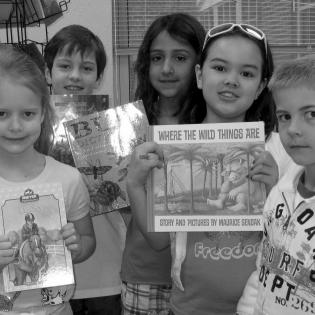Reading Together to Build Youth Philanthropy
Reading with children is a great way to share your time and talent while building youth philanthropy in the community. Picture books are short, artistic, and spark meaningful conversations about who we are in a big, shared world.
Reading a good book with someone is an opportunity to learn about philanthropy, talk about big ideas, and to develop relationships across ages and differences.
Benefits for Reading Partners:
- Fun and friendship.
- Attention to growing vocabulary and important ideas.
- Develops social-emotional skills and moral concepts.
- Demonstrates a love of reading and teaches that books are a source of new learning and new worlds.
- Teaches empathy and awareness of diverse people and places.
- Opens empowering conversations about our personal power to make a better world.
Growing Philanthropic Thinking
These Learning to Give literature guides introduce diverse quality literature while discussing themes of giving, generosity, and ways we can take care of our communities.
- Ask the before, during, and after questions in the method of “open-ended” questioning. This encourages meaningful dialogue and values the reader's thinking.
- Look for ways to develop trust, get to know one another, and expand the child's sense of a bigger community.
- The suggested activities may spark an idea for the child to take action, be creative, or connect with others. Talk about these ideas and provide support, as possible, in the tutor setting.
Reading Tips
- Before you meet with the child, read through the whole book and the literature guide so you know what to expect.
- Sit down next to the child and hold the book together. Enjoy the process. Before you read, slow down, talk about the book cover, glance through the pages, and wonder aloud with the child about the book content and message. Relate the content to your and the child’s experience.
- Use the literature guide questions to stay engaged with the content and the child.
- Depending on the reading skill of the child, you may read aloud the whole book or take turns reading. If the child is a struggling reader, read aloud the whole book first to enjoy its language, rhythm, and story.
- Then read it a second time together. Trace under the words with your finger as you read.
- Talk about phonetic clues, sentence context, and picture clues to read new words.
- Involve the child as much as possible in turning pages, tracing words, filling in words to finish sentences.
The literature guides focus on giving and community. Help the reader understand that he or she has time and ability to act for the good of all. What we each gives is important to making a better community and world.
